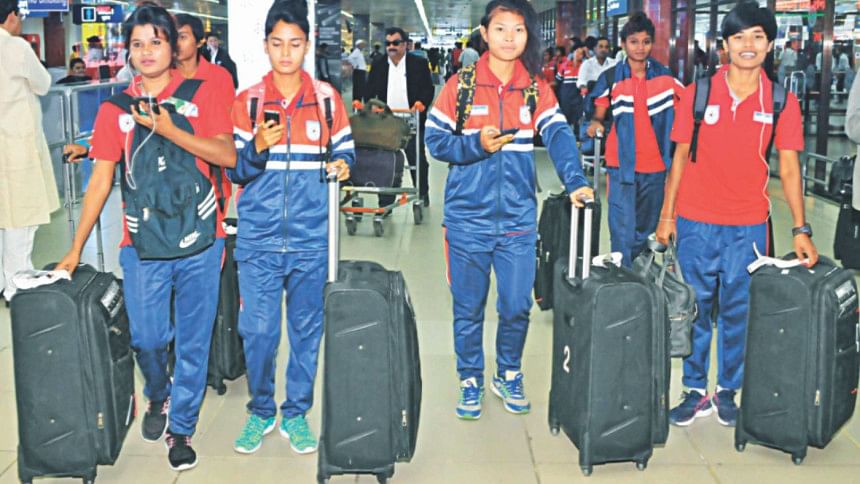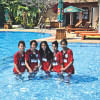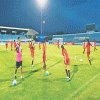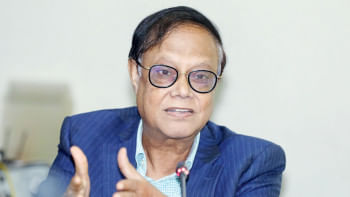Have the girls ground to a halt?

Two-and-a-half years ago, a group of girls emerged out of the blue at the Bangabandhu National Stadium and enthralled the country with their surprising performances that catapulted them to the final round of the AFC U-16 Women's Championship Qualifiers as unbeaten group champions ahead of strong contenders like Chinese Taipei and Iran.
That group of girls then underwent rigorous training for one year, traveling to countries like South Korea, Japan, China and Singapore, in order to prepare for the final round of the AFC U-16 Women's Championship in Thailand in 2017.
They played 22 practice matches against those teams in an attempt to close the gap between themselves and the top sides as well as to alleviate nerves when playing against top-quality opposition. At the championship proper, Bangladesh showed their character and fighting spirit against Japan and Australia, although they were blown away by the outstanding North Korean women's team.
After September 2017, the girls again had round-the-year training and took part in eight international tournaments -- the SAFF U-15 Championship twice, two phases of the AFC U-16 Women's Championship Qualifiers, the four-nation U-15 Zoki Cup, the SAFF U-18 Women's Championship, the AFC U-19 Women's Championship Qualifiers and the Tokyo Olympic Qualifiers -- in the span of 11 months from December 2017 to November 2018.
That was supposed to help the girls mature and gain more international experience to bank on when coming into senior level competitions like the SAFF Women's Championship in Biratnagar, coupled with sweet memories of finishing runners-up in the previous edition of the championship in 2016.
However, despite the plethora of international matches, the girls' performances were not up to the mark in any of their three matches of the SAFF Women's Championship against the lowly Bhutan, experienced hosts Nepal and a young India. As a consequence of humiliating defeats to India and Nepal, the girls in red and green returned home with a wooden spoon.
After that exit, it is being said that the girls -- who have been tagged youngsters by the coaching staff -- were nervous and could not come back into the match as they conceding early goals due to their own errors. However, the fact is that the average of the Bangladesh senior women's team was 18, whereas India's average age was 21.4 and Nepal's a little more. It was also unfortunate that nervousness still grabbed them despite their experience of plaing against stronger sides than either India and Nepal.
The Bangladesh team is comprised of players from the U-16 and U-19 teams and one senior player -- captain Sabina Khatun -- and the performance of the U-16 players has been the best among the bunch. Of the five U-16 players in the starting eleven, Monica Chakma, Akhi Khatun and Shamsunnar were more consistent than others.
Questions also arouse about the team's vulnerable defence -- which was tremendous against Australia and Japan during the 2017 AFC U-16 Women's Championship -- and it's inability to hold the line and track back after attacking set-pieces. Along with the silly mistakes in defence and the attackers' lack of composure across most departments, it was also asked whether the girls have improved at all in the past year-and-a-half despite all the investment.
Further still, there were also questions over the team's game plans despite the presence of the Bangladesh Football Federation's (BFF's) technical and strategic director Paul Smalley.
In reality, the BFF has only 45 players engaged round the year and plays them at different age-group and senior level matches. It seems that it has no intention of reviving the women's football league, which was halted in 2013, and even the National Women's Championship is not being held regulary.
Instead, they are more focused on the U-15 and U-16 teams which bring laurels from the sub-continent and Asia although a couple of coaches have even raised questions about the ages of players in Bangladesh U-15 and U-16 teams.
The final between India and Nepal was inevitable as both the countries have good domestic structures and a lot of players in their age-group teams. Those players are gaining valuable experience and maturing by playing domestic and international tournaments while also playing friendly matches. The absence of those things certainly contributed to Bangladesh exiting from the semifinals of SAFF Women's Championship for the third time.
Now it is time for the game's local governing body to rethink a continuous development programme for the women's football team instead of focusing solely on the U-15 and U-16 teams.

 For all latest news, follow The Daily Star's Google News channel.
For all latest news, follow The Daily Star's Google News channel. 






Comments